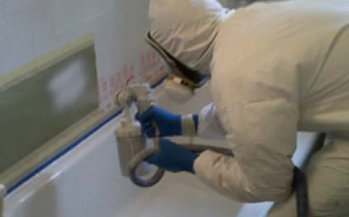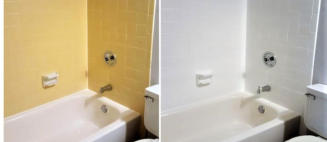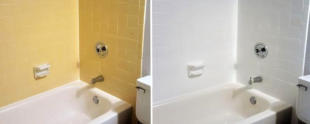About Us
Contact Us
Locations
Become A Resource
Care Instructions
Privacy Policy
FAQS
Refund Policy
Customer Prep
Sitemap
© Bath Refinishing Resource
Call for a Free Quote:
1-800-970-5899
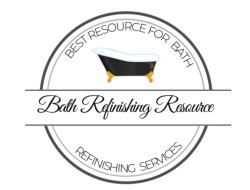
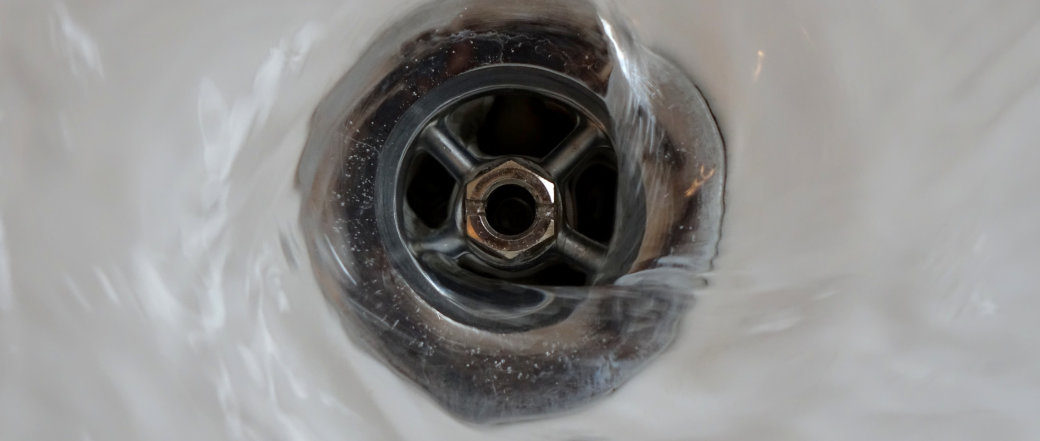
Refinishing Process
Is the concept of bathtub refinishing or
reglazing new to you?
The process has actually been around since at least the 1950’s, but the coatings and methods are constantly being refined. The terms “refinishing”, “resurfacing”, and “reglazing” are all interchangeable when it comes to this process. While each material surface and type of coating being applied may vary, the basic process is straight forward. Before the refinishing can be scheduled, you must make sure the job site is ready for refinishing. We need power and water on and fully functional in the bathroom on the day of refinishing. The equipment we use may draw a lot of electricity, so unfortunately extension cords are not an option. We need proper lighting fixtures so that we can see what we are doing. The better we can see, the better the job will look when done.You will need to have electric and water on
for the refinishing process
Water is used in the prepping process but we can get water from a sink, if the tub fixtures are not fully installed. In most cases we recommend that plumbing fixtures on the items that we are going to coat be replaced prior to refinishing. However, there are times that it is better to wait to install new fixtures until after the refinishing coat is fully cured. Please consult with our estimators before scheduling. We also need a temperature controlled environment. Coatings will not cure if it’s too cold, and our technicians will not be able to perform the work well if it is too hot. If there are any heating/cooling issues on the day of service, then we may have to reschedule to a better time.The bathroom must also be clean and
free of dust
Coatings of this nature are typically done in a clean room with industrial air evacuation equipment, to prevent surface contamination. Since that is not an option with installed items, we ask that customers thoroughly clean and dust the bathroom before we arrive. Dust and pet hair can easily settle onto the surface while the coating is still wet, causing roughness or unsightly blemishes. If there is work being done in or around the house that causes a lot of dust, then we recommend holding off on refinishing for a safer day. All prior refinishing coatings must be removed and damage fixed When we arrive on site, we first determine if there is a prior refinishing coating on the item. This should have been covered when speaking with the estimator, but sometimes it is difficult to be sure until the technician can do an actual physical inspection of the tub. If there is a previous coating which is already failing, we would need to remove as much of that as possible and start fresh. Otherwise the failing product may weaken the integrity of the new surface. If there are no prior coatings, or after they have been removed, we then correct any damage to the bathtub before proceeding with refinishing. Again, these items would have been covered in your conversations with the estimator, but will have to be confirmed with the on-site inspection. If there are chips or deep gouges, we fill them in. Cracks are reinforced and smoothed out. Rust is ground down to polished metal, with any holes being filled in with epoxy resin.Contaminates removed & masking begins
After repairs are done, we focus on removing contaminants from the surface. Coatings will not adhere well if soap scum and oils are present. So we do a high intensity cleaning, which serves the dual purpose of etching the original surface. Etching is done so that the new coat can gain a high material bond. After the high intensity cleaning, the surrounding area is masked off to prevent overspray or dusting of nearby surfaces. A combination of plastic and paper sheeting is used to mask. We use tape that will hold well enough that it shouldn’t blow loose during the spraying process, but hopefully does not peel any existing paint. Please note that old wallpaper, paint or freshly applied paints, are more prone to peeling. We are not liable for damage in these situations and we recommend you take care of those surfaces either before or after the refinishing is done. Once the room is masked off, then the coating can start. Most of our solid color coatings are a two part process. The first layer applied is the bonding agent. This is the material that bonds the top coat to the original surface. Depending on the technician's spraying technique, it usually takes 2-4 passes of the bonding agent for full coverage. After the bonding agent is applied, then we apply the top coat. Again, this would get about 2-4 passes for full coverage.Masking removed and curing process
begins
Once the coating is complete, the technician will remove as much of the masking paper as is safe to do in the initial stage. It is common for some paper to be left up above the item that was coated. This is because there is a high risk of snagging if we try to remove the masking directly above the new coat before it is fully dry. Unless the technician explains otherwise, any masking paper that is still in place after we leave is to be removed by the customer the next day. Please note that we recommend scoring the seam where the tape meets the coating with a utility knife, to prevent peeling of the coating. After the coating has been applied the new surface cannot be used and needs to cure for a minimum of 24 hours (at room temperature 65-75 degrees). Although the refinished surface can be put back into full use after this time, the surface will actually require up to 90 days to completely cure. Often times caulking or silicone that was on the surface will have been removed during the prepping process. In some cases, we can recaulk the same day. Otherwise, it either requires an additional trip out, which incurs an additional fee, or the customer can recaulk the item themselves.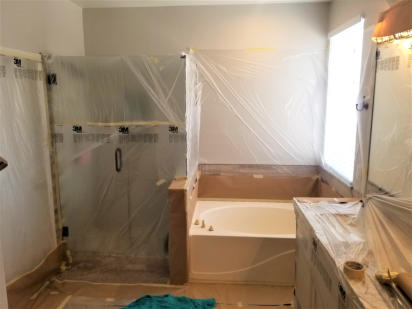
About Us
Contact Us
Locations
Become A Resource
Care Instructions
Privacy Policy
FAQS
Refund Policy
Customer Prep
Sitemap
Call for a Free Quote:
1-800-970-5899

© Bath Refinishing Resource
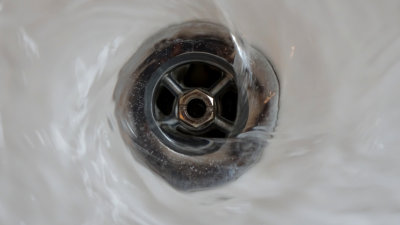
Refinishing Process
Is the concept of refinishing or
reglazing new to you?
The process has actually been around since at least the 1950’s, but the coatings and methods are constantly being refined. The terms “refinishing”, “resurfacing”, and “reglazing” are all interchangeable when it comes to this process. While each material surface and type of coating being applied may vary, the basic process is straight forward. Before the refinishing can be scheduled, you must make sure the job site is ready for refinishing. We need power and water on and fully functional in the bathroom on the day of refinishing. The equipment we use may draw a lot of electricity, so unfortunately extension cords are not an option. We need proper lighting fixtures so that we can see what we are doing. The better we can see, the better the job will look when done.You will need to have electric and
water on for the refinishing process
Water is used in the prepping process but we can get water from a sink, if the tub fixtures are not fully installed. In most cases we recommend that plumbing fixtures on the items that we are going to coat be replaced prior to refinishing. However, there are times that it is better to wait to install new fixtures until after the refinishing coat is fully cured. Please consult with our estimators before scheduling. We also need a temperature controlled environment. Coatings will not cure if it’s too cold, and our technicians will not be able to perform the work well if it is too hot. If there are any heating/cooling issues on the day of service, then we may have to reschedule to a better time.The bathroom must also be clean and
free of dust
Coatings of this nature are typically done in a clean room with industrial air evacuation equipment, to prevent surface contamination. Since that is not an option with installed items, we ask that customers thoroughly clean and dust the bathroom before we arrive. Dust and pet hair can easily settle onto the surface while the coating is still wet, causing roughness or unsightly blemishes. If there is work being done in or around the house that causes a lot of dust, then we recommend holding off on refinishing for a safer day. When we arrive on site, we first determine if there is a prior coating on the item. This should have been covered when speaking with the estimator, but sometimes it is difficult to be sure until the technician can do an actual physical inspection of the tub. If there is a previous coating which is already failing, we would need to remove as much of that as possible and start fresh. Otherwise the failing product may weaken the integrity of the new surface. All prior refinishing coatings must be removed and damage fixed If there are no prior coatings, or after they have been removed, we then correct any damage to the bathtub before proceeding with refinishing. Again, these items would have been covered in your conversations with the estimator, but will have to be confirmed with the on-site inspection. If there are chips or deep gouges, we fill them in. Cracks are reinforced and smoothed out. Rust is ground down to polished metal, with any holes being filled in with epoxy resin.Contaminates removed & masking
begins
After repairs are done, we focus on removing contaminants from the surface. Coatings will not adhere well if soap scum and oils are present. So we do a high intensity cleaning, which serves the dual purpose of etching the original surface. Etching is done so that the new coat can gain a high material bond. After the high intensity cleaning, the surrounding area is masked off to prevent overspray or dusting of nearby surfaces. A combination of plastic and paper sheeting is used to mask. We use tape that will hold well enough that it shouldn’t blow loose during the spraying process, but hopefully does not peel any existing paint. Please note that old wallpaper, paint or freshly applied paints, are more prone to peeling. We are not liable for damage in these situations and we recommend you take care of those surfaces either before or after the refinishing is done. Once the room is masked off, then the coating can start. Most of our solid color coatings are a two part process. The first layer applied is the bonding agent. This is the material that bonds the top coat to the original surface. Depending on the technician's spraying technique, it usually takes 2-4 passes of the bonding agent for full coverage. After the bonding agent is applied, then we apply the top coat. Again, this would get about 2-4 passes for full coverage.Masking removed and curing process
begins
Once the coating is complete, the technician will remove as much of the masking paper as is safe. It is common for some paper to be left up above the item that was coated. This is because there is a high risk of snagging if we try to remove the masking directly above the new coat before it is fully dry. Unless the technician explains otherwise, any masking paper that is still in place after we leave is to be removed by the customer the next day. Please note that we recommend scoring the seam where the tape meets the coating with a utility knife, to prevent peeling of the coating. After the coating has been applied the new surface cannot be used and needs to cure for a minimum of 24 hours (at room temperature). Although the refinished surface can be put back into full use after this time, the surface will actually require up to 90 days to completely cure. Often times caulking or silicone that was on the surface will have been removed during the prepping process. In some cases, we can recaulk the same day. Otherwise, it either requires an additional trip out, which incurs an additional fee, or the customer can recaulk the item themselves.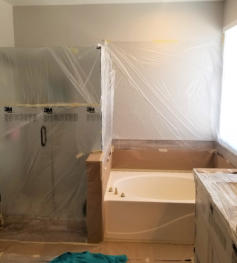

- Home
- Shower Refinishing
- Bathtub Refinishing
- Sink Refinishing
- One Piece Unit Refinishing
- Bathroom Tile Refinishing
- Damaged Tub Refinishing
- Color Chart
- Blog
- Damaged Tub Blog
- Refinishing Care Blog
- What Can Be Refinished Blog
- Refinish Or Replace Blog
- Diy Tub Paint Blog
- Refinishing Process Blog
- Industry Standard Article Blog
- Customer Testimonials
- FAQs
- Locations
- Contact
